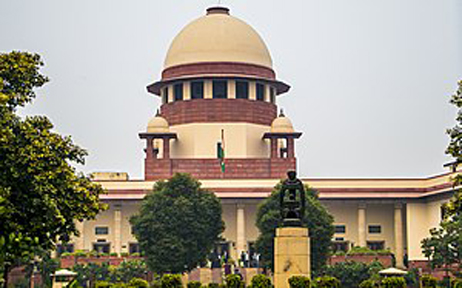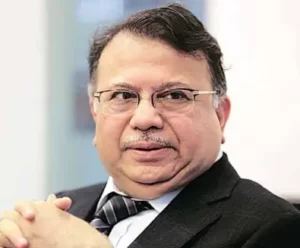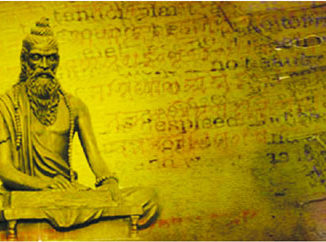
“For better or for worse, the collegium system is currently the law of the land, which everyone, including the executive, must adhere to. Instead, we see a defiant government refusing to cooperate, let alone consult, with the Supreme Court. Names proposed by the collegium are left pending for years, only to be eventually returned unceremoniously. The Government would also do well to think about its own culpability in allowing the problem of pendency and vacancies to fester. Pendency is caused majorly by poor judicial infrastructure, including an abysmally low number of judges. Court funding is at the mercy of the government, which is either particularly frugal or deliberately parsimonious in the matter. Similarly, vacancies in the higher judiciary are directly due to the Government’s frequent refusal to accept names of persons who are out of favor, or who have not toed the Government’s line.”
Issues of pendency and infrastructure ought to be broached in appropriate forums and in high-level meetings to quell the growing acrimony between the executive and the higher judiciary

Recent comments by the Vice-President, Jagdeep Dhankar, and the Law Minister, Kiren Rijiju, can be read as a concerted attack on the collegium system, the Supreme Court of India, and even the basic structure doctrine (conveniently forgetting that it is this doctrine that has kept the Indian Constitution intact). Clearly, the present government continues to try and undermine judicial independence, which it has been doing since it first came to power in 2014. As a long-standing critic of the collegium system, I might have joined a chorus that called out the problems with judicial appointments. But this onslaught from the Government has been particularly disturbing and wholly unwarranted.
An ‘elected autocracy’
The Supreme Court, conceived as the custodian of the Constitution and the final arbiter of the law, has had an inconsistent history. The ghosts of ADM Jabalpur continue to haunt to this day. While the government under Indira Gandhi intended to destroy the judiciary during the Emergency, the entire Court, barring Justice H.R. Khanna, was also complicit in the erosion of citizens’ rights that took place then.
Over the decades, after much reflection and repair, from both within and outside the judiciary, those dark days have been seemingly left behind. But what worried us then has now re-emerged to torment us again.
The present move — of attempting to undermine and discredit the judiciary, as seen in the comments — is part of the larger mission to make the executive the most powerful entity. Today, executive accountability is a thing of memory, for no one raises any questions about its actions. Since 2014, the Government has undertaken a well-crafted, deliberate takedown of various institutions and mechanisms that could hold the executive accountable. Its efforts may not be as brazen as the Indira Gandhi-led government, but the same ends are being achieved: the state is rendered practically comatose, and the executive, most often, has the upper hand.
Parallels can be drawn with ‘elected autocracies’, where elected governments use the very institutions integral to democracy to kill democracy itself and destroy civil liberties. We have heard nothing of the Lokpal since. The National Human Rights Commission has been made dormant. Investigation agencies are misused at the slightest opportunity, with action against activists, journalists, students, political opponents, or anyone who protests against the government. The Election Commission of India appears to have been clearly compromised. The Information Commission is almost non-functional. The list is long and disturbing. Others who can hold the executive accountable — academia, the press, and civil society — have also been systematically emasculated. Universities are under attack. An unbiased mainstream fourth estate in India no longer exists, and the media operates mostly as a propaganda machine. Civil society, too, is being slowly but surely strangled.
And a resurgent judiciary
Since the Supreme Court’s decision in 2015 on the National Judicial Appointments Commission (NJAC) Act, arguably, from the Court under the Chief Justices of India (CJI) Dipak Misra onwards, through the tenures of notably Justice Ranjan Gogoi and Justice S.A. Bobde, the judiciary has remained passive, even submissive, to the executive. Consequently, not even a whisper emerged against the collegium. However, with the last three CJIs, i.e., Justice N.V. Ramana, Justice U.U. Lalit, and Justice D.Y. Chandrachud, the Court is being more assertive and speaking in a non-aligned and confident voice. The executive seems to have recognized that the judiciary is the last bastion and final protector of civil liberties which it must overcome to claim its position as the most powerful entity in India.
History tells us that in the early years of modern India, decisions on judicial appointments were usually made on the advice of the CJI. Even if concurrence was not contemplated, for our founding fathers, an independent judiciary was non-negotiable. B.R. Ambedkar was unambiguous that appointments should have no political pressure and considerations, but that ‘consultation with persons who are well-qualified … to give proper advice’ would be appropriate. This was followed through the Nehru-era.
Both the Indira Gandhi and Rajiv Gandhi governments attempted to manipulate the process. The collegium was created as a historical response to contemporaneous challenges, and succeeded in preventing the executive from hijacking judicial appointments. However, I maintain that ‘judges appointing judges’ is never a good idea, and a formal, structured appointments commission, with rules and accountability mechanisms, is the ideal way forward.
The NJAC law could have fixed this problem but it had many flaws, structured to undermine judicial independence, including giving a veto to so-called ‘eminent persons’. The Court could have read down these flaws and at least set up a body that could incrementally improve with every selection round. But the Government refused to accede to any change or modification in the law. Eventually, the Court was forced to strike down the law completely, leaving us, once again, with the collegium system.
Fixing the system of appointments
For better or for worse, the collegium system is currently the law of the land, which everyone, including the executive, must adhere to. Instead, we see a defiant government refusing to cooperate, let alone consult, with the Supreme Court. Names proposed by the collegium are left pending for years, only to be eventually returned unceremoniously. The Government would also do well to think about its own culpability in allowing the problem of pendency and vacancies to fester. Pendency is caused majorly by poor judicial infrastructure, including an abysmally low number of judges. Court funding is at the mercy of the government, which is either particularly frugal or deliberately parsimonious in the matter. Similarly, vacancies in the higher judiciary are directly due to the Government’s frequent refusal to accept names of persons who are out of favor, or who have not toed the Government’s line.
All this points to the same thing repeatedly, i.e., the appointments system must be fixed. Pending a clear, rule-based system, even the existing collegium system can be improved, e.g., through well-defined criteria for appointments, transparency and accountability in selection, better methods of assessing candidates for elevation, and improved ways of ensuring diversity and representation. CJI Chandrachud, with two years in office, has a wonderful opportunity to make these changes, even as, in the long term, we strive for a well-structured and balanced legislation on a judicial commission that brings in transparency without compromising judicial independence.
Until then, issues of pendency and infrastructure should be broached in appropriate forums, such as the Chief Justices Conference, or meetings between the Prime Minister and the CJI. Press interviews or parliamentary addresses are not fit stages for this, and only serve to incite acrimony and reinforce the view that the Government does not have a cooperative spirit.
We can rest assured that the leadership at the Supreme Court appears to be in good hands now and is resisting the pressure and attacks in a dignified and restrained way. If the Government continues to stonewall, perhaps the judiciary should find ways to persuade or even compel the Government to follow the law of the land. This is the best that the Supreme Court can do to protect democracy, and for the sake of Indian citizens.
(The author is former Chief Justice, Delhi High Court and Madras High Court, and former Chairperson, Law Commission of India)





Be the first to comment